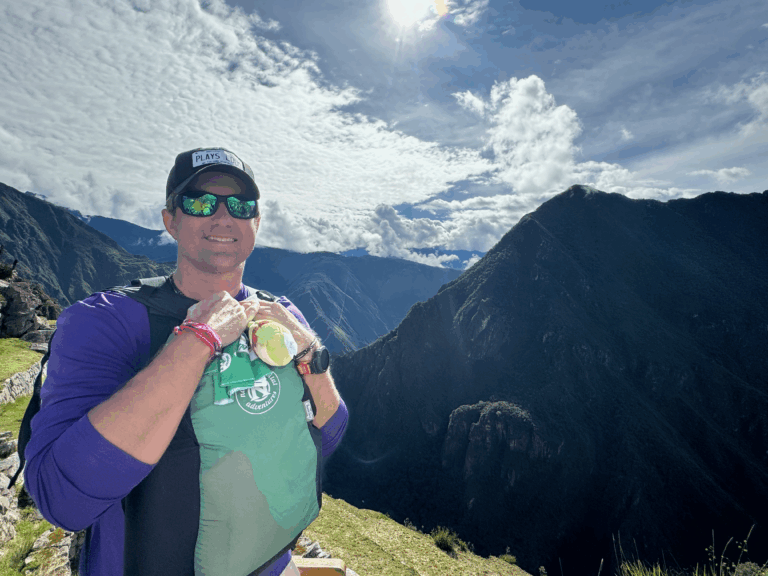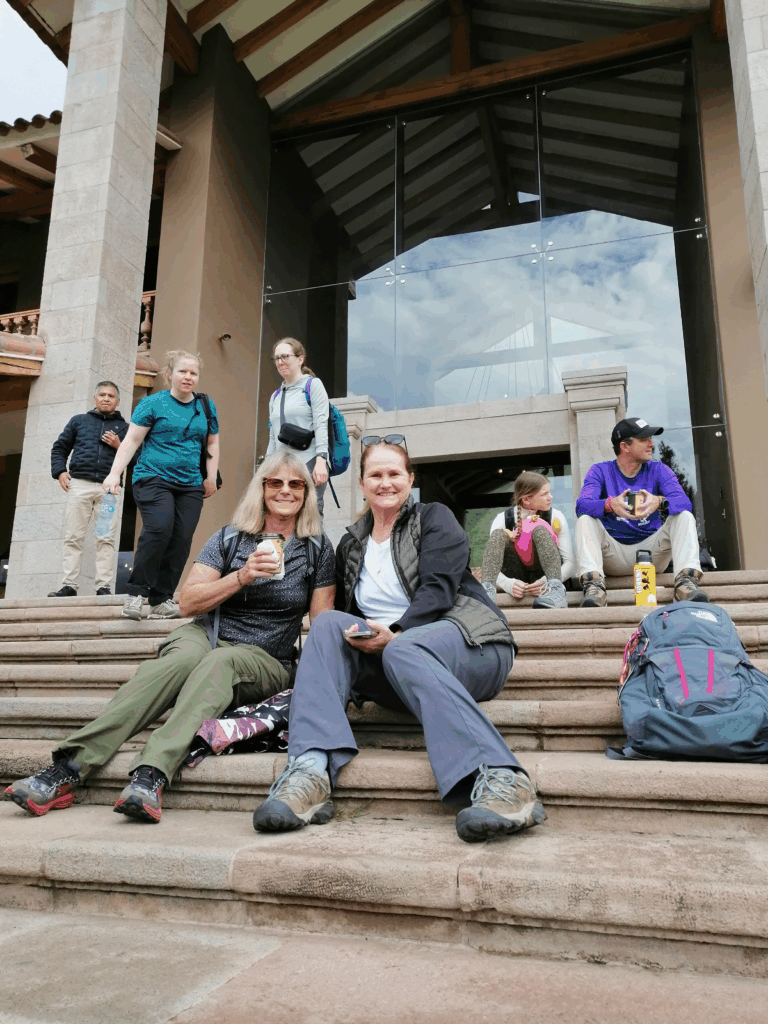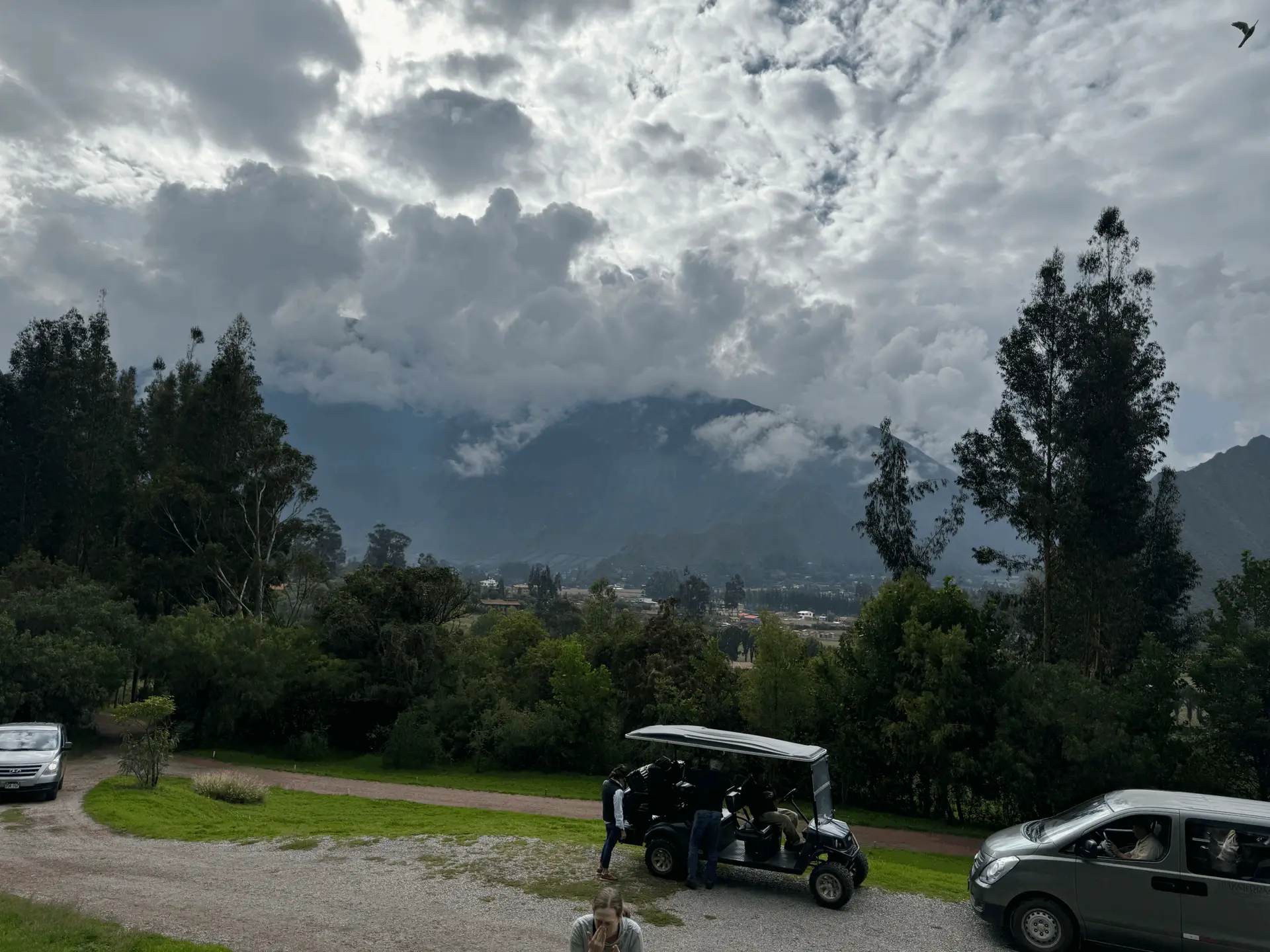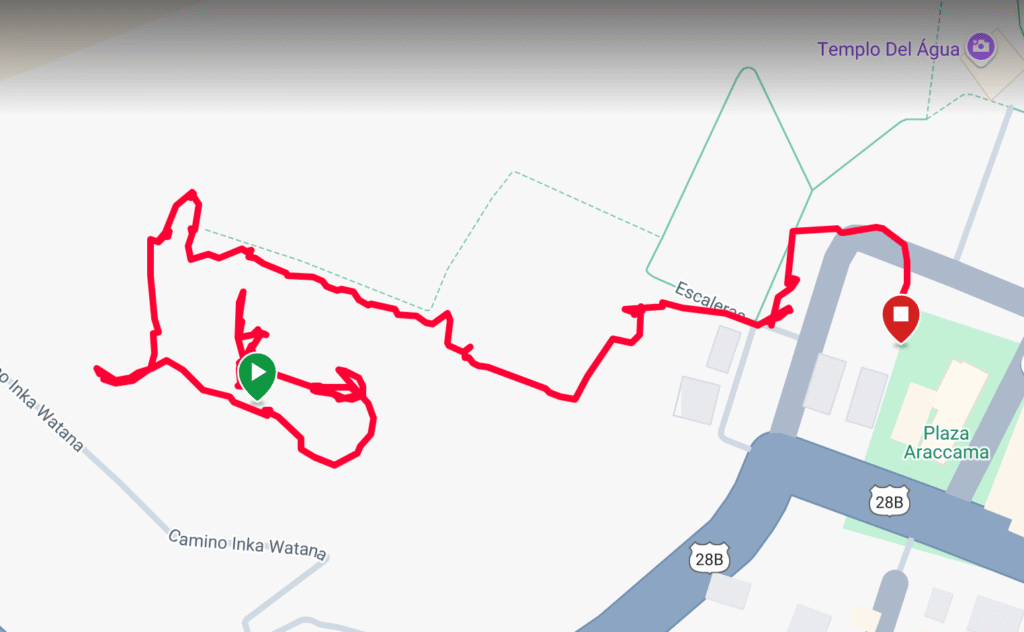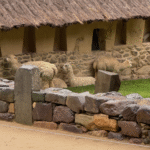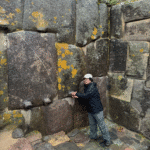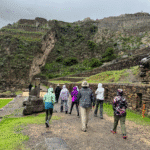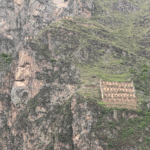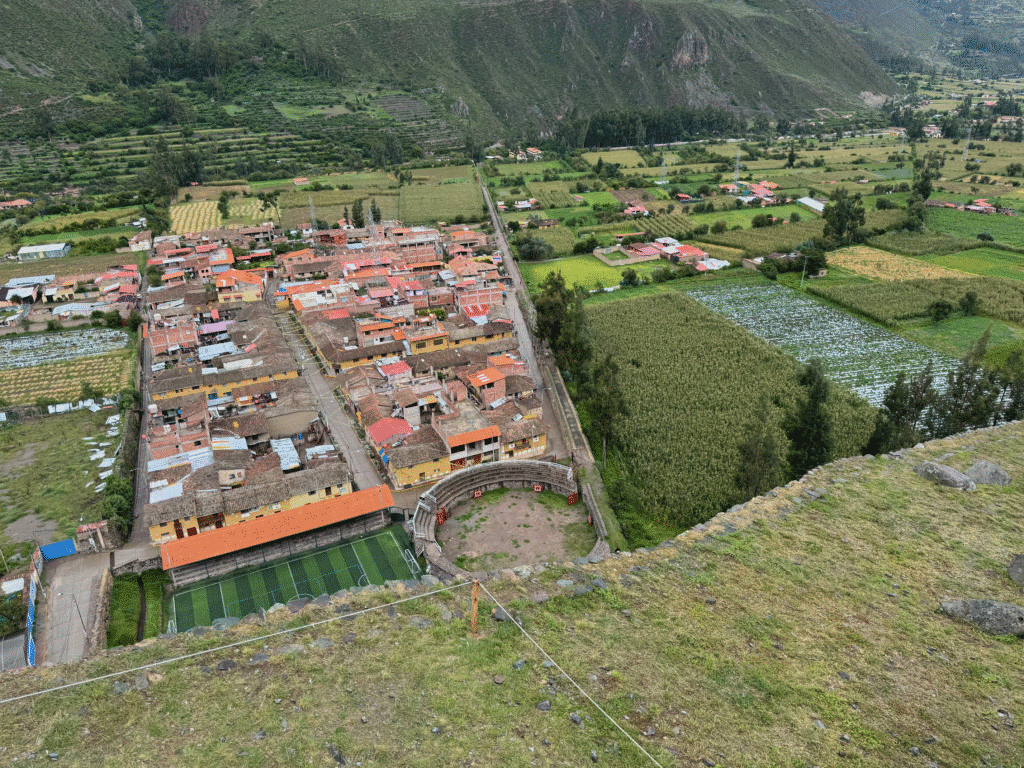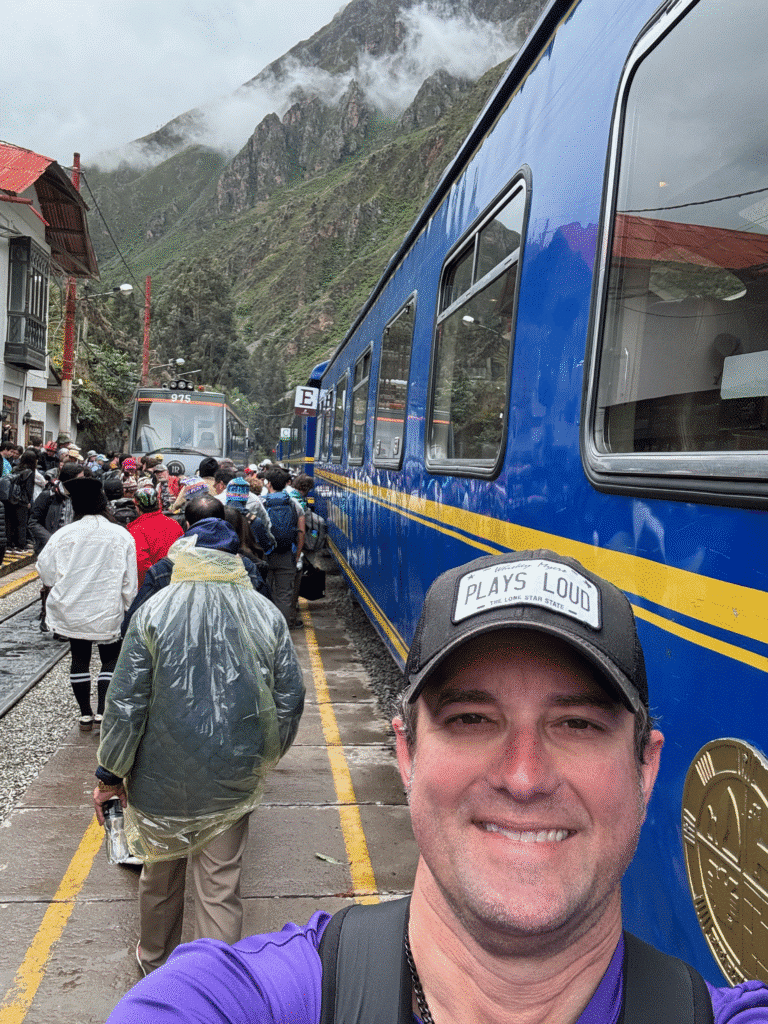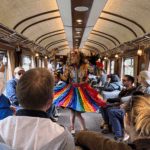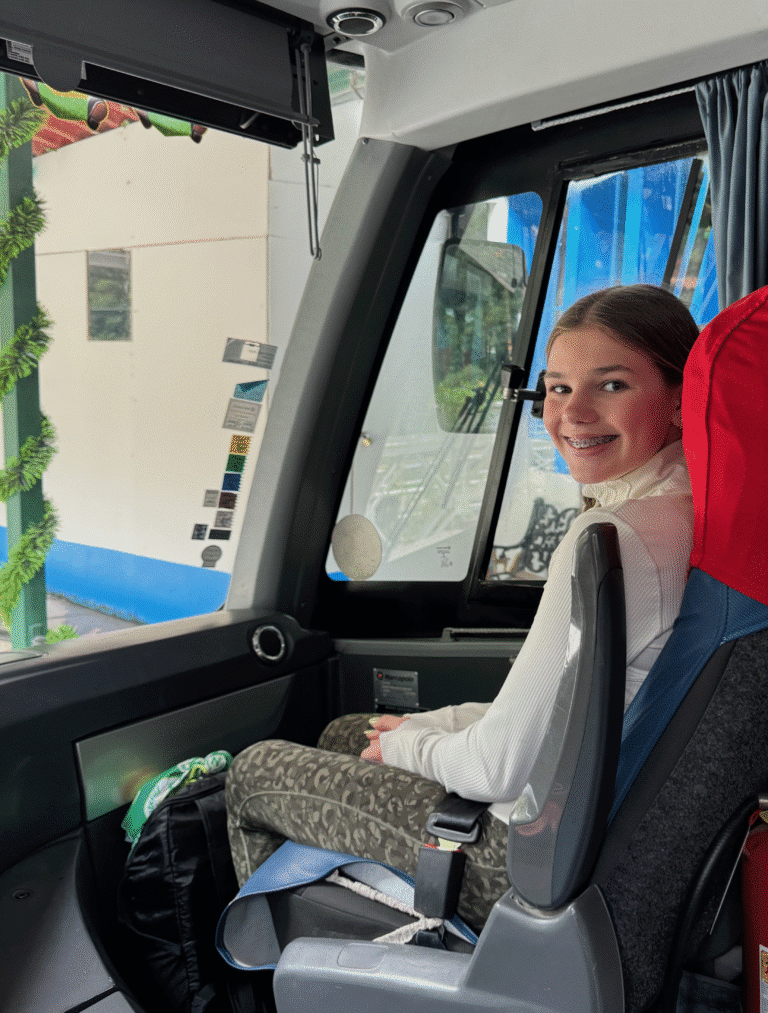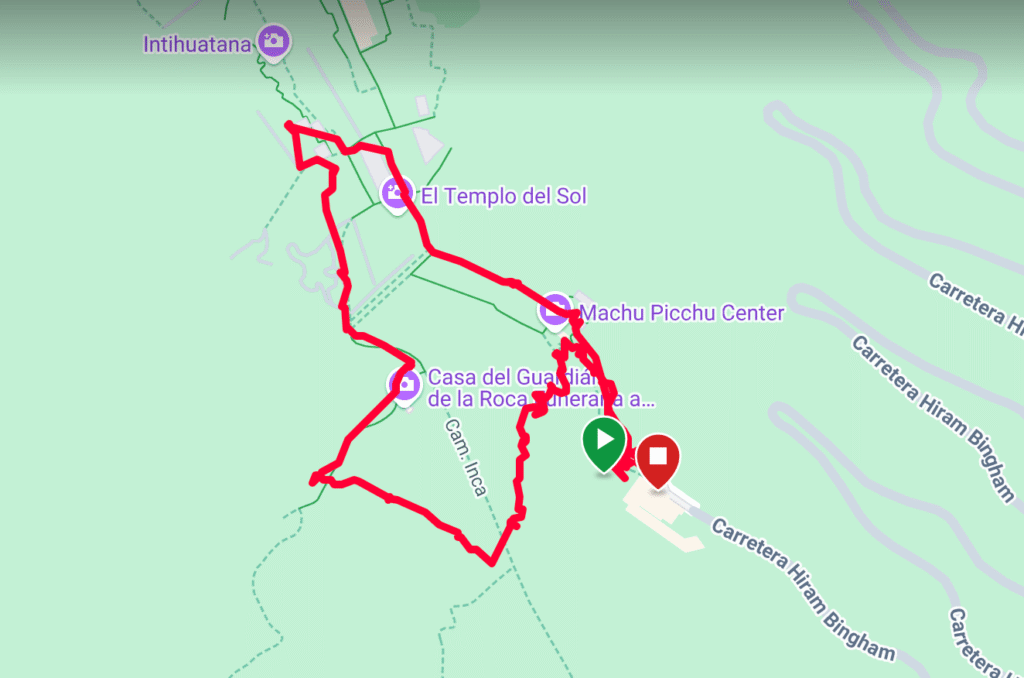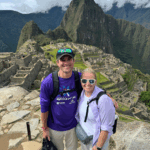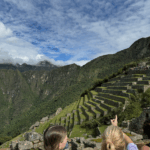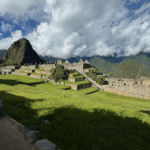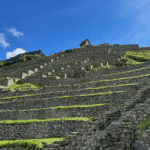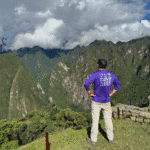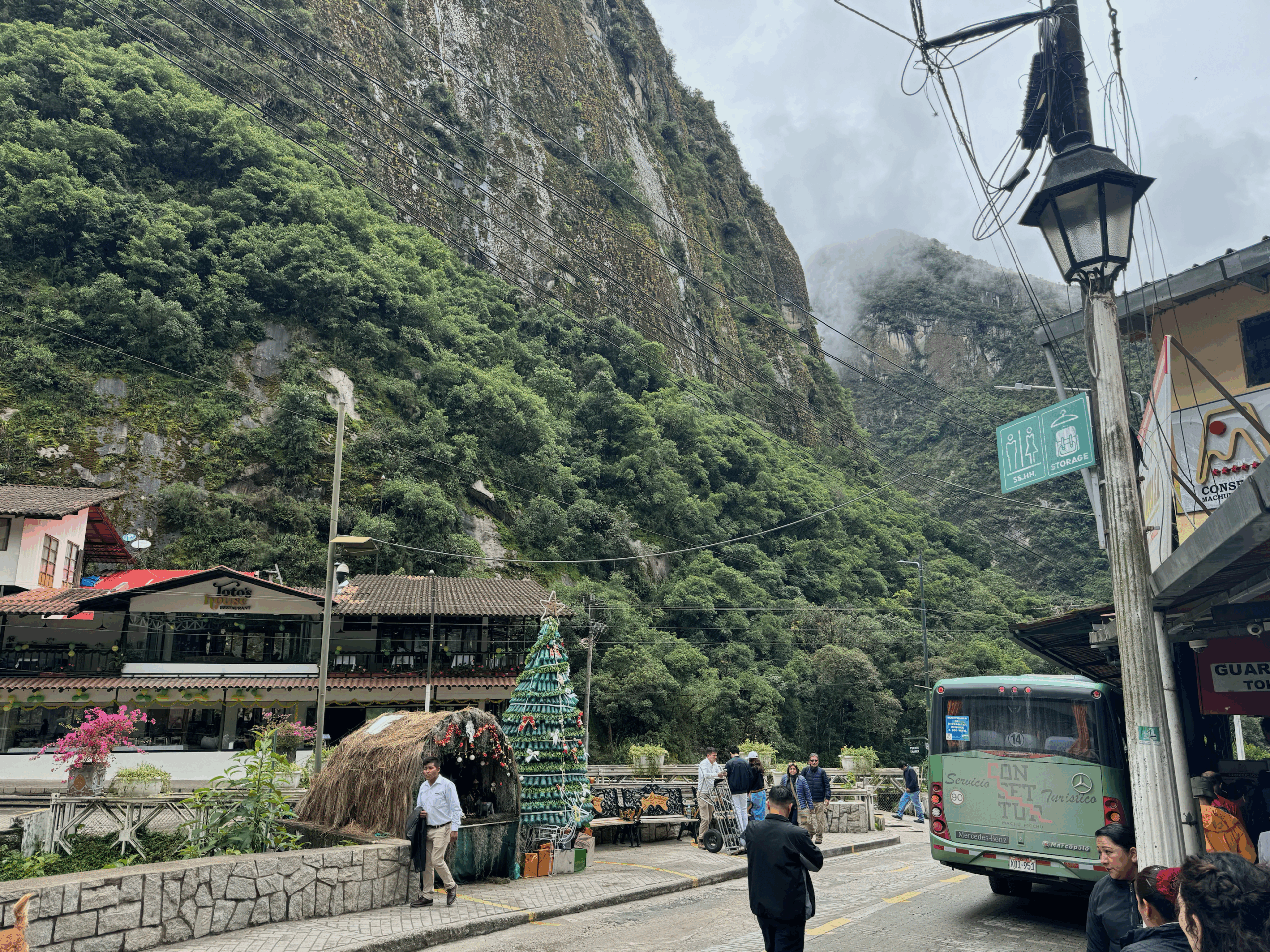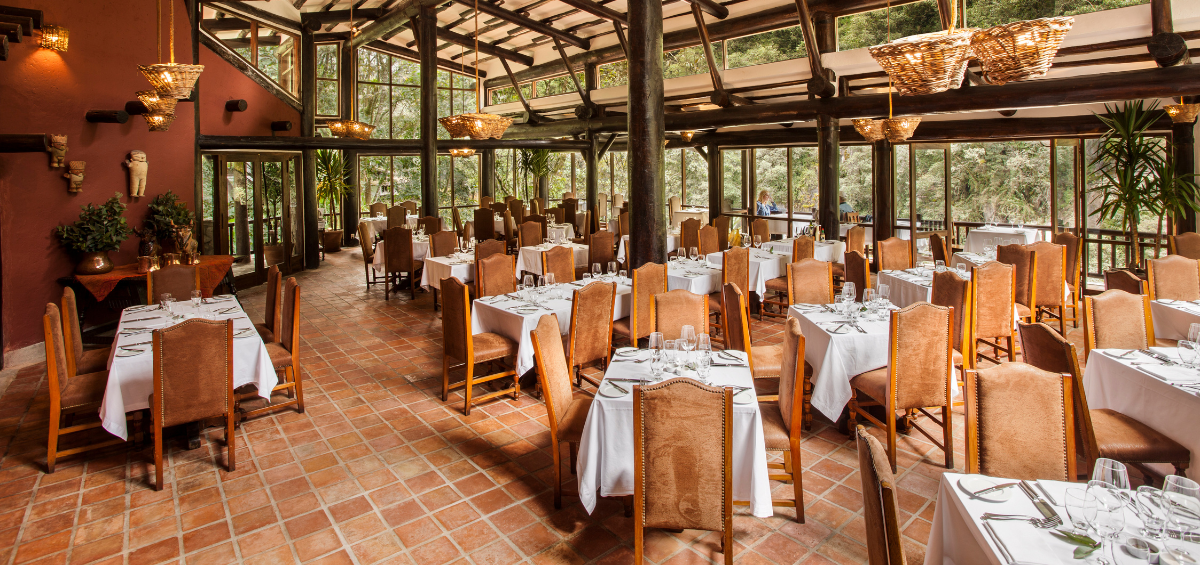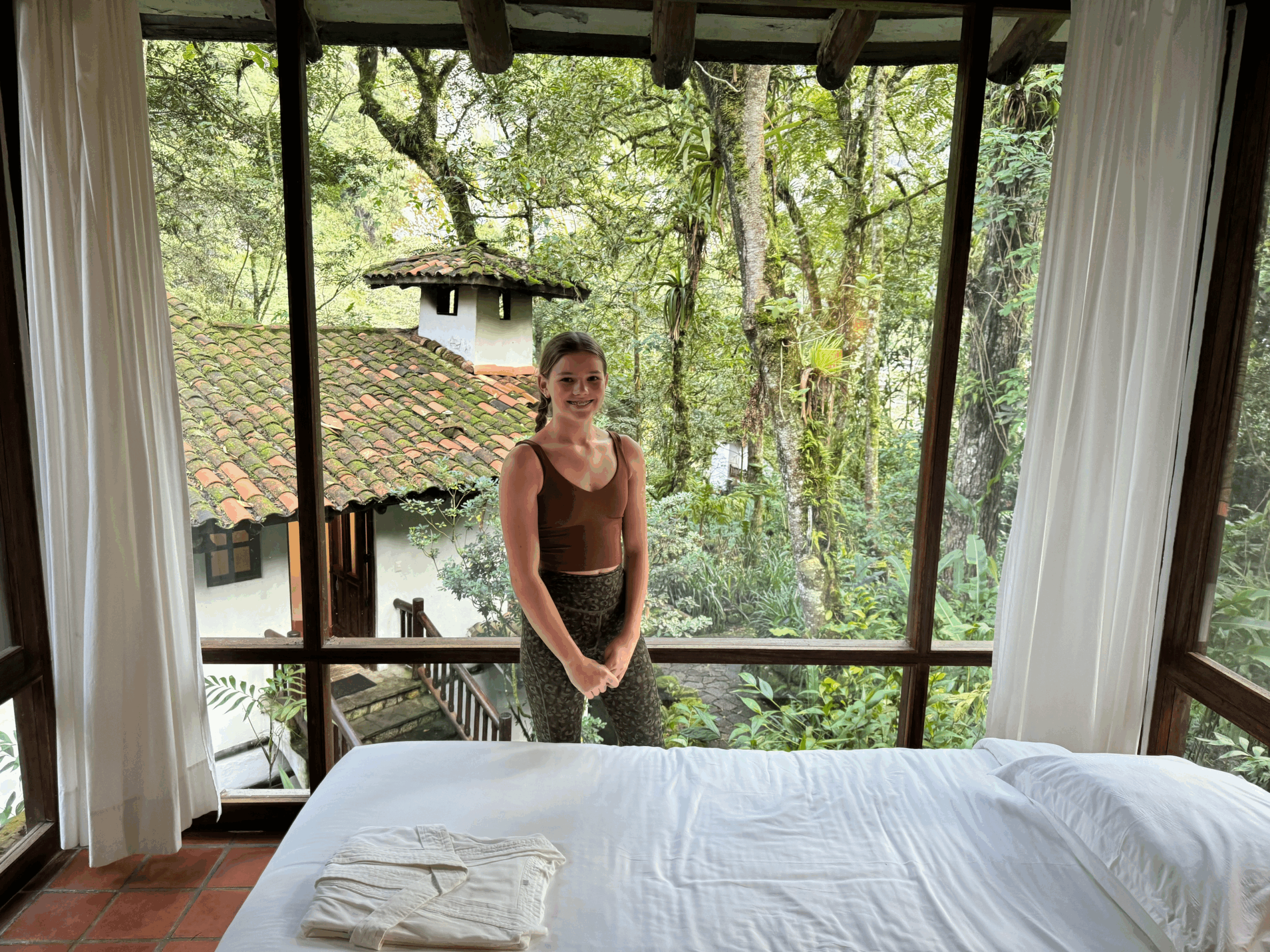We woke up at the beautiful Inkaterra Hacienda Urubamba to a breakfast of buttery croissants and fluffy omelets. After gathering our bags, we lounged on the front steps, sipping coffee and soaking in the serene morning views as we waited for our ride. Once it arrived, the NatHab team grabbed our bags and we were whisked away!
Driving through the charming, and ancient, town of Ollantaytambo, we passed narrow cobbled streets strung with wires and dotted with tent markets brimming with tourist treasures.
Amy stayed behind to enjoy some tea and stay dry, while Charlie, I, and a few others from the group braved the on-and-off rain to explore the ruins leading up to the Templo del Sol. Squeezing a backpack under a raincoat was a challenge, but kept Charlie’s camera and snacks dry.
Our guide Willie gave us a fascinating rundown on how the Incas cut and transported stone, using models to demonstrate at the base of the steep terraced hill. A few llamas casually roamed nearby, adding to the ambiance. Though modern handrails offered safety, you could still see the original Inca steps—Charlie and I couldn’t resist sneaking up one for a quick photo op. From across the terrace, we could see the face of the Incan king Viracocha carved into the neighboring hillside.
At the top, the view back into town was spectacular. Francis pointed out the stone quarry on a distant mountain, and described the likely ramp route the Incas used to move massive stones uphill. He explained that it is also possible some of the Temple predated the Incas. Just below, we spotted a legit bullfighting ring—right next to a soccer field. Local sports definitely have their own flair here.
Next stop: the train station. We’d seen the trains in Lima that connect to Aguas Calientes, and now it was our turn to board. It was chaotic and busy at the station, and just to grab a snack and the bathroom was an adventure. Thanks to NatHab, Francis and Willie corraled us onto the train, and we were treated to the Vistadome car—complete with air conditioning, snacks, and a panoramic roof that gave us an epic view of the lush Machu Valley.
As the train got rolling, passengers were gradually invited to the back car—our turn soon came. The Entertainment Car had floor-to-ceiling windows, beer and wine service, and eventually, dancers in colorful, traditional costumes. Charlie, of course, ended up on the dance floor while the rest of us enjoyed the show with our drinks. The train hugged the edge of the roaring Urabamba River, too intense to raft in the northern parts. I asked Francis about it—he said rafting isn’t permitted, but many opt for the 4-day Inca Trail hike to Machu Picchu. Definitely an idea for the future.
From train to bus, Francis had everything prearranged. Charlie got the front seat as we zigzagged up the winding road to Machu Picchu—a thrilling ride with barely a foot between uphill and downhill buses, yet the drivers navigated it like pros. With timed entry tickets, we had a bit of time to grab a buffet lunch at Tinkuy — a casual buffet spot and a good chance to get to know our group better.
Then came the main event: Macchu Picchu.
Shrouded in clouds, the ancient city slowly revealed itself. It’s awe-inspiring to imagine how the Incas, without modern machinery, shaped, transported, and assembled these massive stones into a city of temples, terraces, and homes. Restoration work was underway in parts, and we’d read that access is more limited today than in the past, in an effort to preserve it.
We climbed countless stone staircases until we reached a vantage point above the main ruins, with a sweeping view of Machu Picchu and Wayna Picchu beyond. As Francis shared stories about its history and construction, a small group of llamas strolled by, completely unfazed by us. We paused for photos and to just be in the moment.
Descending into the heart of the site, we were struck by the detail and durability of everything. The buildings still stood strong, aligned perfectly with the sun—many looking nearly move-in ready aside from missing roofs and electricity. There were temples, living quarters (differentiated by social status), and beautifully arranged garden spaces. The entire city was nestled within a tapestry of mountains and drifting clouds—a truly unforgettable setting.
Afterward, we hopped back on the bus to Aguas Calientes and walked through town to our hotel, the Inkaterra Macchu Picchu Pueblo. It was just as luxurious as our previous Inkaterra stay, with cozy condo-style rooms and old-school keys. Amy booked a spa treatment, we scoped out the natural hot tub, and then joined the crew for a few beers before enjoying a traditional Peruvian dinner in a gorgeous greenhouse-style restaurant overlooking the river.
Another unforgettable day in the Sacred Valley.

